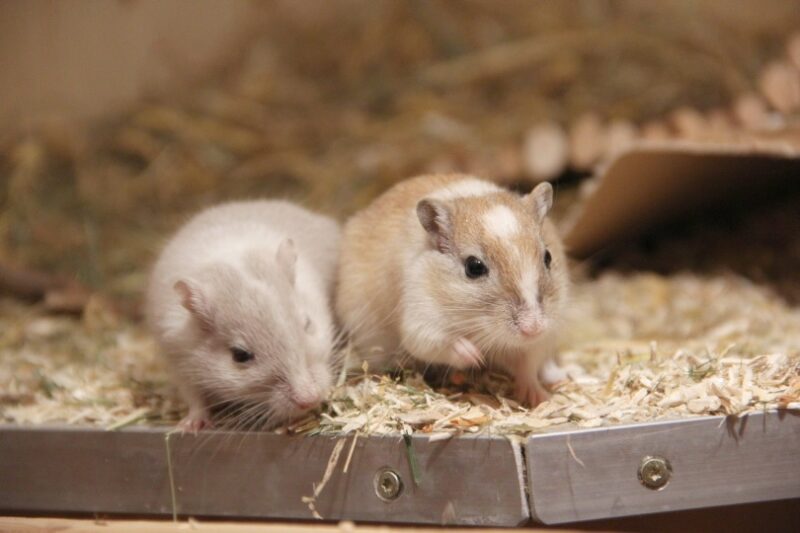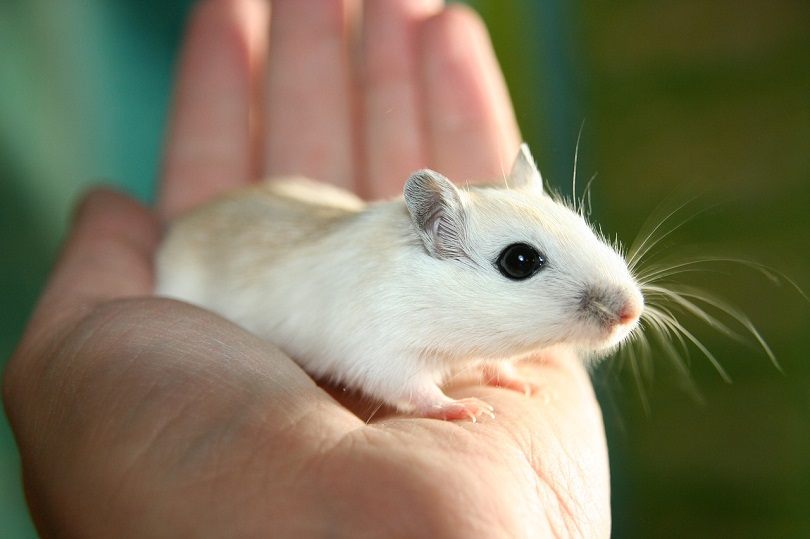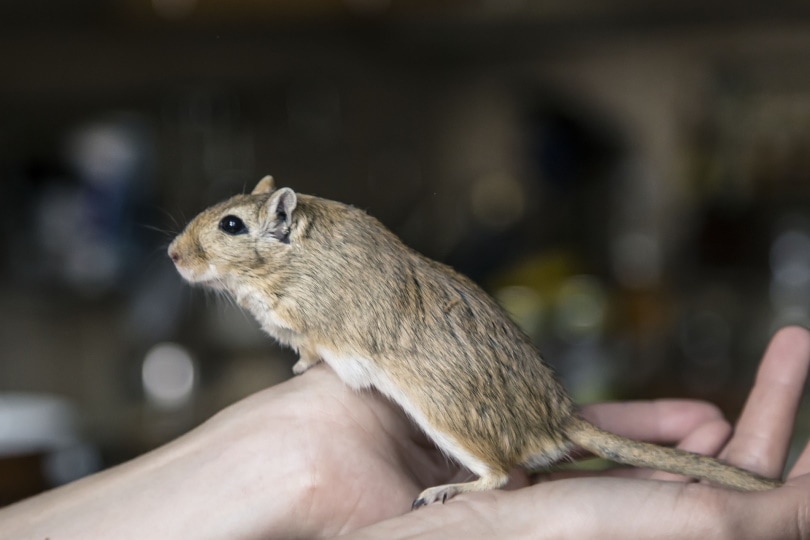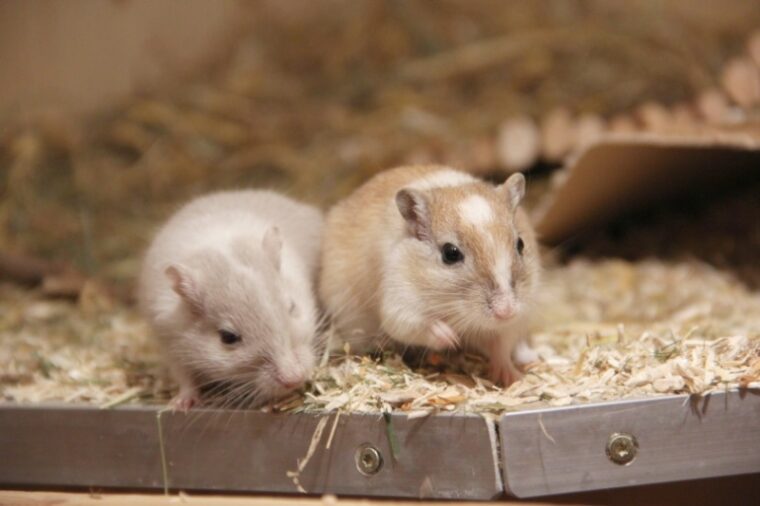
Gerbils have become a popular house pet. People all over the world have fallen in love with their sweet faces and highly social personalities. Their energetic temperaments hide a surprising amount of intelligence and easy-going personalities that make excellent companion animals for someone who doesn’t have as much space as a larger animal would require.
The 15 Facts About Gerbils
1. They were known as ‘desert rats.’
Gerbils were referred to as ‘desert rats’ before becoming a popular companion animal in North America and Europe. The moniker isn’t very accurate, though, as they are a distinct rodent species from rats. The exact origin of the term ‘desert rat’ isn’t clear. Still, the name retained its meaning up until the rodents were separated into their subfamily, ‘Gerbillinae’ from the diminutive form of the word ‘jerboa,’ another unrelated rodent species.
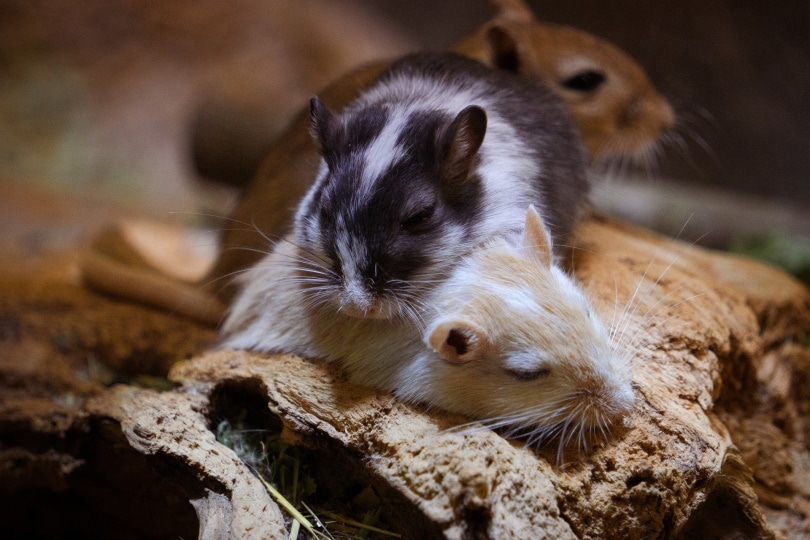
2. Their fur protects them from sunburns.
Gerbils do hail from the desert and, as these animals are primarily diurnal creatures, they contend with the hot desert sun daily. Fur covers their entire bodies, from head to tail. This evolutionary adaptation protects them from sunburns in the wild. In captivity, it just makes them seem a little more cuddly.
3. Gerbils wash their fur using sand.
As desert animals, gerbils know the value of water and wash their coats using sand instead. They roll around in the sand, which gets any leftover debris out of their coats. In captivity, it’s recommended to provide your gerbil with an adequate amount of chinchilla dust that they can roll around in to replicate the sand they would use to keep clean.
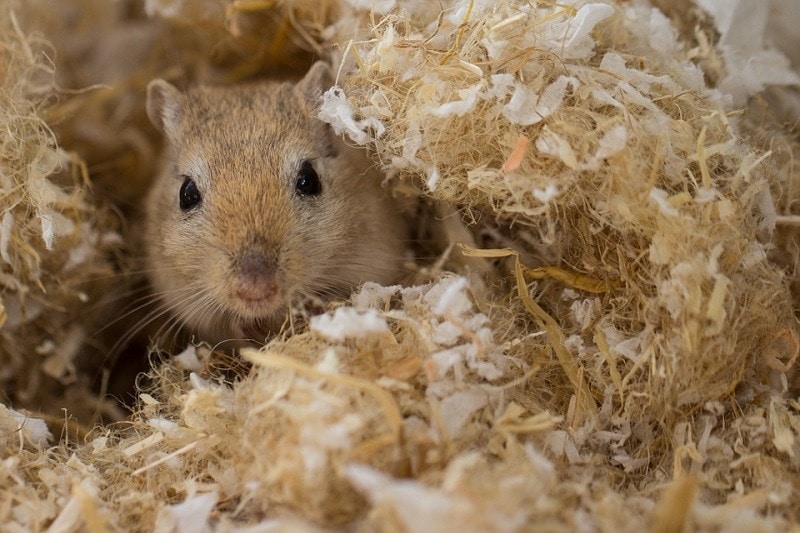
4. Humans can’t hear most gerbil vocalizations.
Humans aren’t unfamiliar with the squeaking that we do hear from our gerbil companions, but this isn’t even a fraction of the complex communication patterns used by these furry rodents. Humans can only hear sounds up to about 20 kHz, and most gerbil vocalizations are up in the 50 kHz range, far past what most humans can reasonably hear.
5. Gerbils are omnivores.
Gerbils usually eat plant-based diets when kept in captivity, but that doesn’t mean they’re herbivores. Gerbils are omnivorous creatures that can consume and digest both plant and animal matter. Due to their naturally diminutive sizes, gerbils will hunt and eat insects on top of foraging for plants in the wild.

6. There are over 40 different gerbil coat colorings.
We usually see Gerbils represented with golden fur coloring. It makes sense; they’re desert prey animals, and this pigmentation would make for good camouflage in the wild. In captivity, gerbils can present a wide variety of coat colorings, including black, red, and golden. There are more than 40 coat pigmentations present in the gerbil population.
7. Gerbils can learn to do tricks.
Rats represent one of the most intelligent rodent species that we can commonly keep as pets. But that doesn’t mean they’re the only intelligent species. Gerbils may not be as quick as their cousins, but they are highly food-motivated creatures, and offering the correct reward can train your gerbil to do tricks for the tasty treats that are served up when they follow commands.
Giving your gerbil treats can get them learning to follow your lead in more than one way, as well. Perhaps as a callback to their heritage as tunneling creatures, gerbils can and will memorize mazes when introduced to them. Especially when appropriately rewarded for completing tasks and knowing their way around, gerbils have been known to quickly pick up on directions and show understanding of their surroundings.
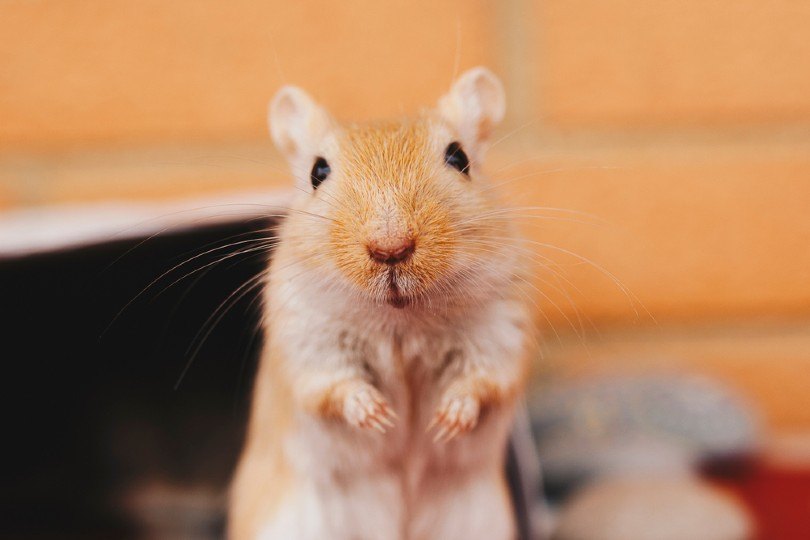
8. Gerbils can jump one foot in the air.
It’s essential to ensure that your gerbil’s enclosure and any play enclosures are well-ventilated and well-secured. Gerbils boast powerful hind legs that can send them soaring into the air, a skill they use to escape predators in the wild. Gerbils can even be trained to jump up onto an owner’s shoulder, in some cases, as these tiny rodents boast a jumping height of one foot (12 in).
9. There are over 100 species of gerbils.
The gerbil we know and keep as a pet is the Mongolian gerbil, but there are more gerbils than just that one! There are 110 recognized species of gerbils in the world.
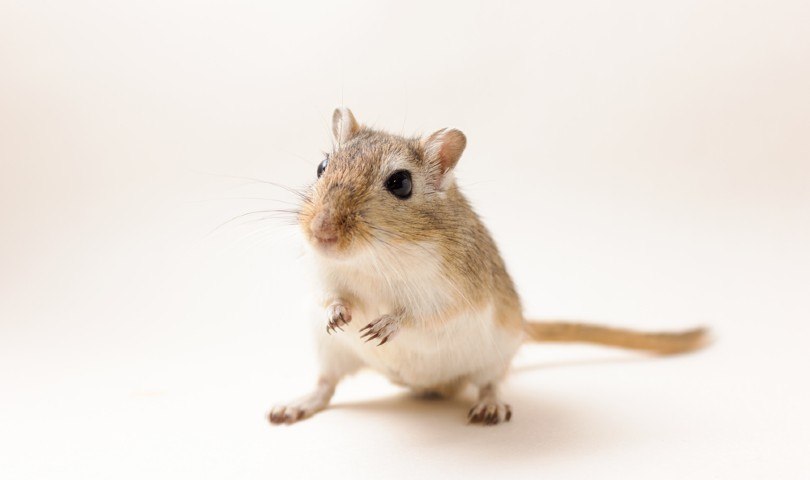
10. The world’s biggest gerbil species is sixteen inches long.
Gerbils, like many rodents, are widely considered to be relatively diminutive, but not all gerbils are as cute and tiny as the Mongolian gerbil. The Great gerbil lives in central Asia and can grow to be 16 inches long.
11. Gerbils may have brought the Black Plague to Europe.
Though we are more than aware of the influence of rodents in the Black Plague, the Proceedings of the National Academy of Sciences in America has linked more recent reintroductions of the plague to Europe to the Asian Great Gerbil.
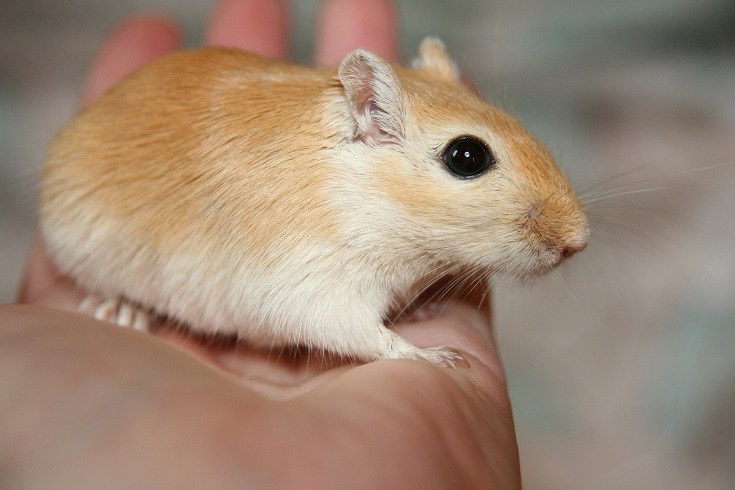
12. Gerbils are very involved parents.
Young gerbils spend a long time with their parents. Both the mother and father of their young uns will take meticulous care to raise capable adults. They learn everything from bathing to what they can and cannot eat by watching their mother and father. Gerbil fathers are involved every step of the way; they will clean, protect, and gather food for their young.
13. Gerbils can lose their tails from improper handling.
‘Tail slip’ is a condition where the skin of a gerbil’s tail slips off, leaving the bone and muscle of the tail exposed. It’s an evolutionary adaptation for wild living, as predators often go for the tail when hunting. Gerbils evolved for the skin of their tails to slip off if caught, leaving the skin and fur behind.
Tail slip is a pretty severe injury and should be brought to the attention of an exotic veterinarian immediately. Lack of treatment can result in the tail becoming necrotic and rotting away, leaving surgical intervention as the only way to prevent the gerbil from dying.
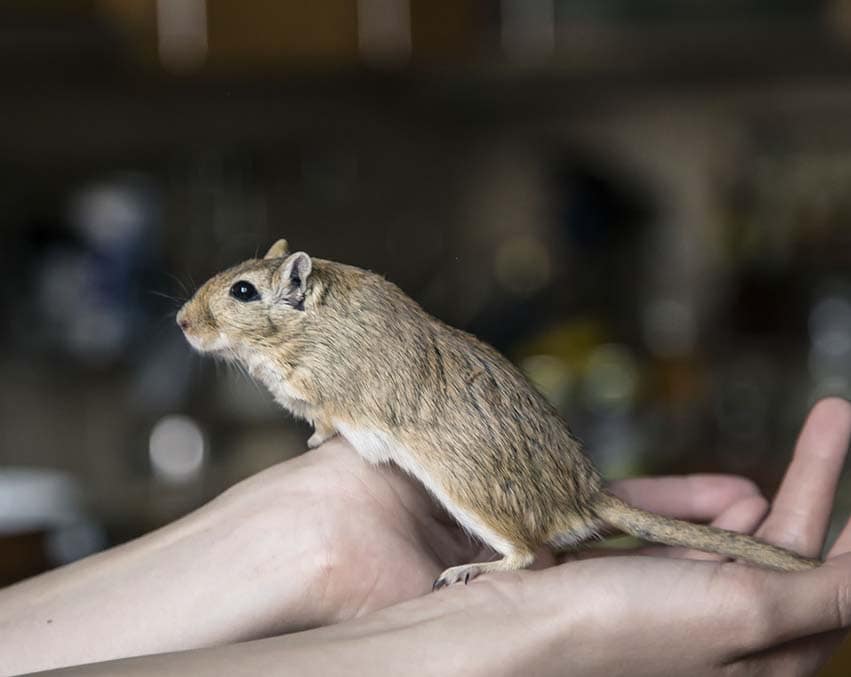
14. They are illegal to own in California and Hawaii.
Gerbils may look harmless, but California and Hawaii have banned ownership of these fuzzy friends in those states. They deemed the risk of escaped gerbils integrating into their natural ecosystems too high to allow citizens to own the animals.
15. Gerbils do not urinate often.
Gerbils are one of the cleanest animals you can own! Due to their desert heritage, the gerbil’s body has evolved to store liquid for long periods. As a result, gerbils don’t often urinate to conserve the water that they drink.
Conclusion
Gerbils are an increasingly popular pet to own. There’s a lot of information to learn about these lovable rodents, whether you’re an aspiring owner or a curious onlooker. They’ve come a long way from the desert. If you’d like to own one, there are a few gerbils out there waiting for you to give them a forever home!
Featured Image Credit: Pixabay


